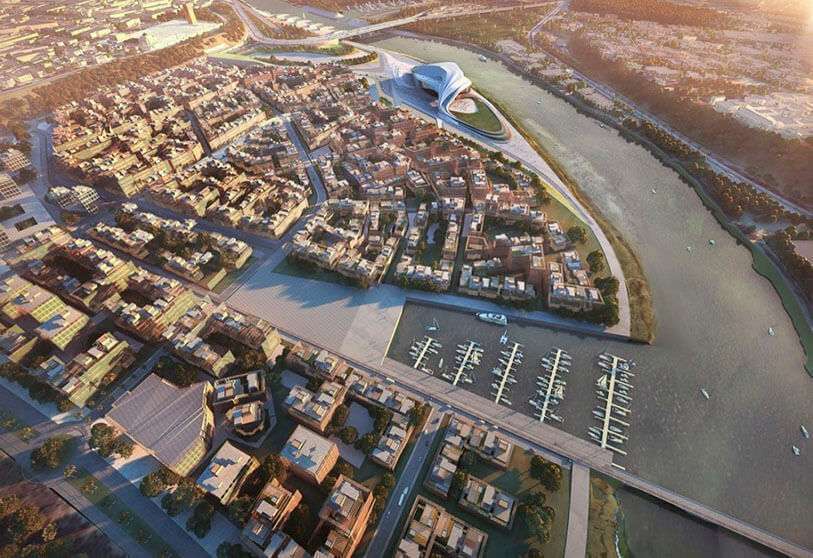Morocco prepares to open the Grand Theatre of Rabat

The theatre is part of the Bouregreg Valley Development Project initiated by King Mohammed VI in January 2006 as an ambitious national cultural development programme for artistic and cultural reinvention. Close to the Mausoleum of Mohammed V and the Hassan Tower, it aims to transform the urban landscape on both sides of the Bouregreg River. With 47,000 square metres, it will be the largest theatre in the Arab world and in Africa.
Designed by the famous Iraqi architect Zaha Hadid, one of the main figures of contemporary urbanism, and continued after her death by the great Moroccan architect Omar Alaoui, this futuristic design building is equipped with quality infrastructures that will accommodate a large number of people, cultural and artistic events. It is designed to encourage all forms of creative expression, both those that are in harmony with the secular heritage of the city of Rabat and those that are in line with modern taste, in its many and varied styles and genres.
The project team compares it to a floating island. "Zaha Hadid's architecture is fluid, organic...she wanted to give the impression that it emerges directly from the ground and is integrated into the site. In this spirit, we created water ponds around the theatre," says Omar Alaoui, the project's associate architect. "We were inspired by the old theatres, in the Italian style, although the architecture of the GTR is very modern. By building it vertically, we wanted the audience to be as close to the stage as possible," explains Omar Alaoui.

The construction project of this work, which is part of the policy of providing the various cities of the Kingdom with cultural infrastructures, reflects the real desire to provide Rabat with a theatre that will raise this city to the rank of the great metropolises of the world. This project aims to give culture a prominent place, in particular by reaffirming the commitment of the public authorities to provide, by appropriate means, their support for the development of cultural and artistic creation, and to broaden and generalize the participation of young people in cultural development and facilitate their access to culture, while creating conditions conducive to the full development of their creative potential.
The Grand Theatre of Rabat aims to bring a new cultural life to the city and includes a section dedicated to artistic revitalization and entertainment that will host major national and international artistic and cultural events. The space will host theatrical performances and opera shows in its large hall with 2,000 seats, which has state-of-the-art audiovisual services. It will include a large open-air theatre that is expected to welcome 7,000 visitors for festivals, cultural and artistic activities. It will also include a second hall with some 520 seats, as well as a number of special services and external equipment such as car parking, green spaces, a restaurant with panoramic views, shops, cafeterias and a bookstore.

The Grand Theatre of Rabat is part of a generation of grand theatres that first emerged with the opening of the Mohammed VI Theatre in July 2014 in Oujda. In addition to the Grand Théâtre de Rabat and the Théâtre Mohammed VI, there is also the Grand Théâtre de Casablanca, the cultural complex in Fez and the cultural complex in Tangier. All these spaces were created as part of Morocco's efforts to highlight the role of culture in achieving development.
The Grand Theatre of Rabat, which thus promises to be a new cultural icon, will undoubtedly be an architectural and urban development landmark on an international scale, especially since this project benefits from a remarkable geographical location that combines a prestigious history and an exceptional landscape with monuments testifying to the glorious past of the twin cities of Rabat and Salé.








